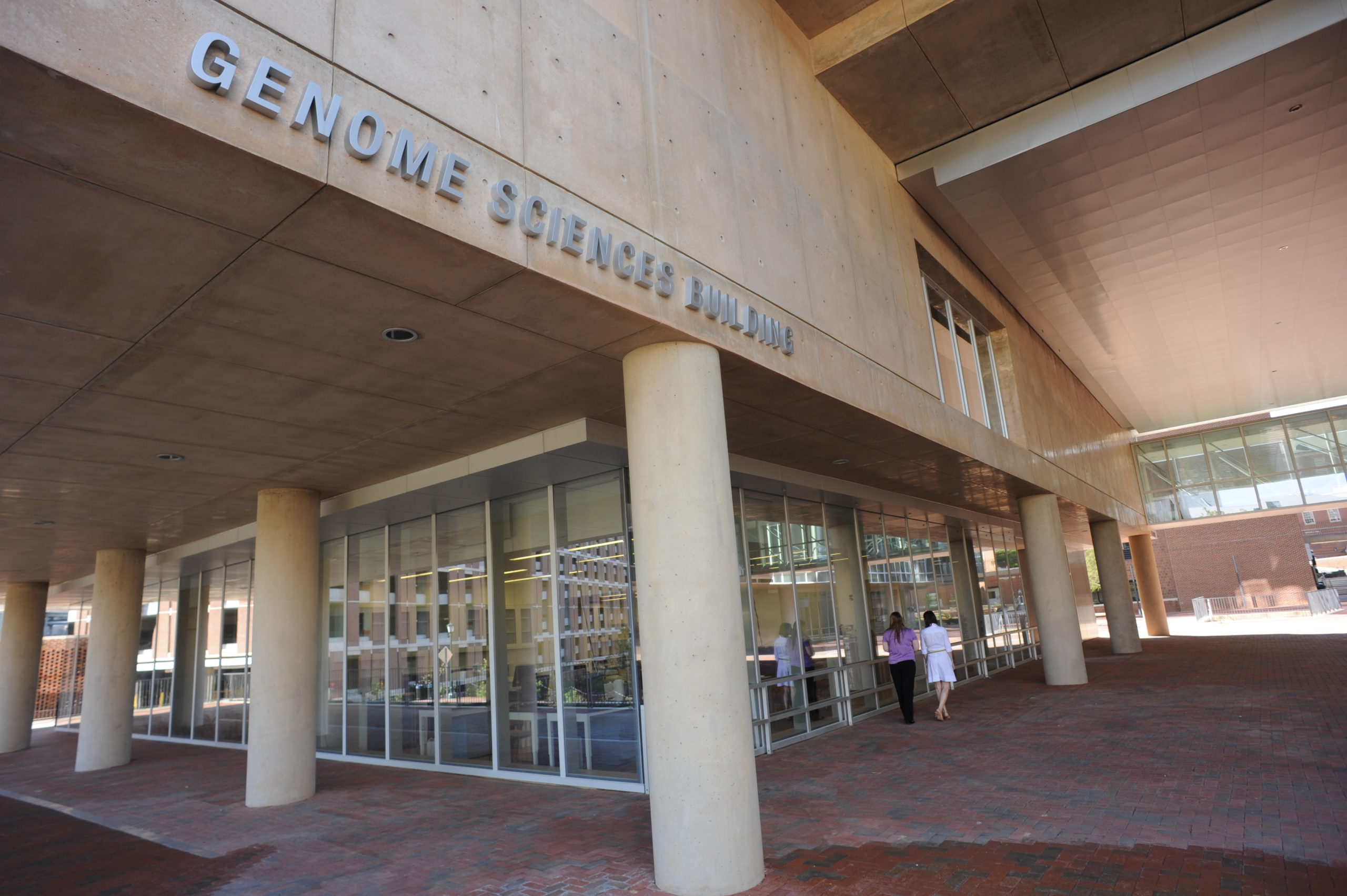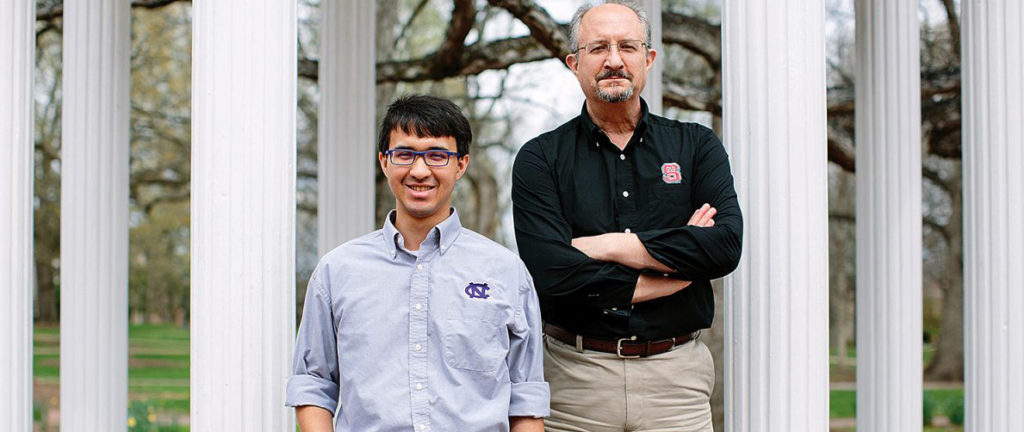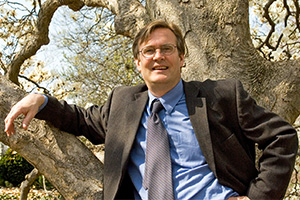
A decade ago, then-Chancellor James Moeser announced a sweeping $245 million genomics initiative to position Carolina as a leader in the genomics revolution.
With the dedication of the new Genome Sciences Building on Oct. 12, 2012, Carolina is prepared to meet new challenges in the rapidly evolving field of genome science.
Located at the geographical center of campus, the Genome Sciences Building has an overarching goal: to foster collaborations at the intersection of different disciplines – and in every way, it is designed to do just that.
“Proximity is really important in a busy world,” says Jeff Dangl, Howard Hughes Medical Institute Investigator and John N. Couch Professor of Biology in the College of Arts and Sciences. “The explicit concept of this building is let’s hire new people at the interface of all of our traditional disciplines. Let’s give them a home – or at least a foothold – here in this building and see what comes of it in terms of generating new synergistic science.”
Its footprint lies on the border between the College of Arts and Sciences and the five health affairs schools, where basic research meets clinical applications. Researchers from departments as diverse as biology, chemistry, computer science and statistics have opportunities to interact with each other in the building and are very closely located to colleagues in the schools of medicine, pharmacy, nursing, dentistry, public health, and information and library science.
Dangl is no stranger to interdisciplinary research. Working with statisticians and computer scientists, he tries to make sense of the genome of thousands of microbes that inhabit plant roots and are essential for the plants’ health.
Access to the latest technologies
Any UNC scientist has access to the latest technologies that analyze whole genomes, from microbes and viruses to plants and humans. Made possible through the state-funded University Cancer Research Fund, this core equipment, housed on the first floor of the glass-walled building, is being pushed to its limits by scientists exploring new ways to use the technologies to gather ever-more sophisticated data.
“Because our DNA sequencing core is so successful, companies that build these machines are constantly asking us to take a new one and test drive it,” says Dangl. “It’s cool because we are not only in the position to access the technology, but also to help determine the direction it will go.”
Although it is a research building at heart, the Genome Sciences Building was designed to engage students at every level, from undergraduates to postdoctoral students, and in both the sciences and humanities. The building features 250- and 450-seat auditoriums and smaller seminar rooms. Science and non-science majors alike course through the plaza every day, peering through the windows of ground-floor core facilities where undergraduates and graduate students use science equipment to conduct hands-on, interdisciplinary research.
Engaging students
“Undergraduates are walking by sophisticated devices designed to explore the interactions between DNA and proteins, and it’s a way to directly engage students who may not have even known that they wanted to do research,” says Jason Lieb, director of the Carolina Center for Genome Sciences and a biology professor in the College.
The new building, part of a larger redevelopment of the Bell Tower parking lot, also looks over an amphitheater and has inviting meeting and teaching spaces, as well as a café, all designed to promote interaction among students, faculty and staff. Nearly a quarter of the research facilities on the upper levels were intentionally left unfilled. This, too, was part of the designers’ strategic mission to promote interdisciplinary research.
“We purposefully didn’t fill it to the gills,” says Lieb. “This building will instantly serve the college, and it will also continue to attract some of the brightest minds in genomics research, who will see our mission and want to join it. The field moves so fast, and this building provides the facilities and the space for Carolina to stay on top.”
Carolina’s investment in science buildings, including those making possible the genome sciences initiative, has given an outstanding faculty new tools to compete for research dollars at the highest levels, says Barbara Entwisle, vice chancellor for research and a sociology professor.
UNC-Chapel Hill rose from 19th to ninth among all private and public research universities in the USA for the level of federal funding devoted to research and development in all fields in a remarkably short time frame, from 2008 to 2010.
“The genome science initiative has played a significant role in us moving up in the rankings in research funding,” Entwisle says. “Bringing people together brings ideas together, and that makes for great science.”
Read a companion story tracing the origins of the University’s genome sciences initiative and how it coincided with a campus building boom.
Read a fall 2011 Carolina Arts & Sciences magazine story on the Genome Sciences Building
Story courtesy of UNC News Services




